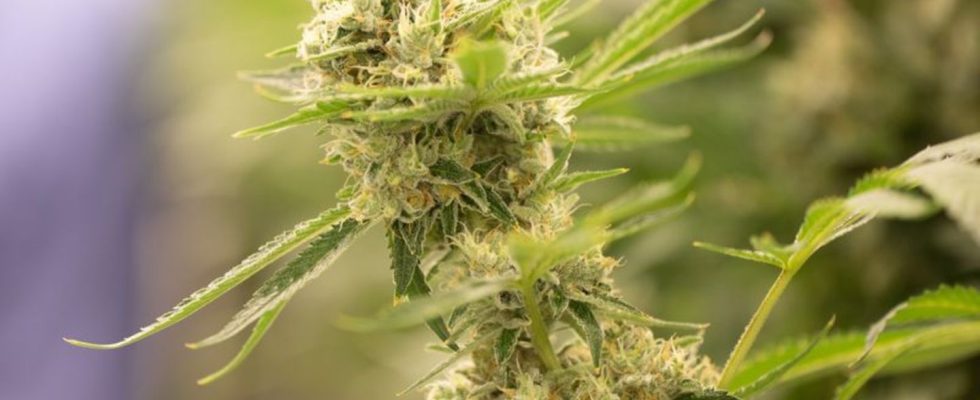Smoking weed may become legal in Germany this year. The project is now set in motion by the traffic light. It is a partial legalization and not the big hit that was originally planned.
The federal government is expected to launch its controversial plan to legalize cannabis in Germany today. The Greens and FDP in particular had already campaigned for the project during the federal election campaign.
Since the beginning of the summer, there has been a draft law by SPD Health Minister Karl Lauterbach, which is now to be passed by the federal cabinet and then sent to the Bundestag for debate and approval. Although the project does not go as far as originally planned, it radically turns German drug policy upside down.
What is cannabis anyway and how does it work?
Cannabis is the Latin name for hemp. According to the German Hemp Association, the resin on the flowers of the female plant contains high concentrations of tetrahydrocannabinol (THC), which is the substance with the intoxicating effect.
When the dried bulbous flowers are smoked or products containing THC are consumed, users get “high”: Depending on the amount and concentration, they get into a cheerful, often silly state. However, the drug also causes anxiety and panic in some people. The high peak lasts about half an hour and then slowly fades away. A typical sign that someone is “stoned” is very red eyes.
How widespread is this actually in Germany?
The Federal Ministry of Health refers to representative surveys from 2021. In it, 8.8 percent of all adults aged 18 to 64 said they had consumed cannabis at least once in the last 12 months.
9.3 percent of young people between the ages of 12 and 17 said they had tried cannabis at some point in their lives. 1.6 percent of those surveyed in this age group said they used it regularly. Half of the young adults (18 to 25 years) had already tried it. 8.6 percent stated regular consumption in the past twelve months.
What specifically is to be legally regulated now?
Cannabis is to be removed from the Narcotics Act, where it has been listed as a prohibited substance along with heroin and other drugs and subject to corresponding penal provisions.
From the age of 18, possession of 25 grams should be allowed in the future – comparable in volume and weight to two heaped tablespoons of potting soil. A maximum of three cannabis plants should be allowed to be grown privately. In associations, so-called cannabis clubs, members should be allowed to grow the drug together and give it to each other.
Should cannabis also be freely available for sale?
No, not at first, although that was the original plan – based on countries like Canada or individual US states. There are special shops selling everything from flowers (“weed”) to ready-rolled joints to cannabis-infused sweets freely to adults. This is now to be tested in Germany, initially in isolated pilot projects. However, a separate law is still required for this, which is not yet available.
How exactly is this supposed to work in these cannabis clubs?
There the plants are to be cultivated “collectively” and “non-commercially” and may only be given to members of the association. Funding comes from membership fees. A maximum of 500 members are allowed per club. A maximum of 25 grams per day and a maximum of 50 grams per month per member may be spent – under 21-year-olds no more than 30 grams per month with a maximum THC content of ten percent. The drug may only be issued in a “neutral packaging” with a leaflet stating the weight, harvest date, best-before date, variety and active ingredient content.
Rooms and grounds of the cannabis clubs must be fenced and designed to be burglar-proof. Greenhouses need a privacy screen. Every club should draw up a health and youth protection concept and appoint an addiction and prevention officer who has to be trained and attend regular refresher courses.
What rules are still planned?
Smoking weed in and around cannabis clubs should be prohibited, as well as within a radius of 200 meters from the entrance area of schools, kindergartens or playgrounds and sports fields and in pedestrian zones between 7 a.m. and 8 p.m.
When is it legal to smoke a joint in Germany?
The Federal Ministry of Health writes on its website that the cannabis law could come into force at the end of the year. Until then, the drug will remain banned, even if possession of small amounts has long since ceased to be a criminal offense in many places.
The exact date of entry into force depends on how quickly the project is discussed and approved in the Bundestag after the summer break. As with any law, the Federal Council also has to deal with it formally, but can probably not stop it. According to the Ministry of Health, it is not subject to approval in the state chamber. CSU-governed Bavaria, for example, is strictly against legalization.
What speaks in favor of legalizing cannabis, and what speaks against it?
A charged debate is raging here: proponents and the federal government are arguing that the ban policy has failed, as people are still smoking more and more pot. Then it would be better to release qualitatively correct products to a limited extent, without possibly toxic admixtures and with clarity about the THC content, so the argument goes.
In addition, the black market and organized drug crime could be curbed. Opponents, on the other hand, fear a “normalization” of the drug, lowering inhibitions even among young people and point to the dangers of cannabis consumption for the immature brains of adolescents.

